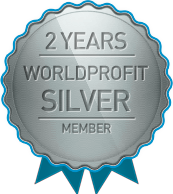» Free Associate Membership
» Extreme Traffic Pack
» 18 Memberships FREE for LIFE
» Internet Marketing For Newbies
» Solo Blast To 30,000 FREE
» Promote To ONE Million

Curtailing the revolving door syndrome, where individuals repeatedly enter and exit rehab for substance abuse, requires a comprehensive approach that addresses both immediate needs and long-term recovery. Here are some strategies that can be implemented to prevent relapse and ensure sustained recovery:
1. Personalized Treatment Plans
- Assessment: Conduct thorough assessments to understand the individual's specific needs, triggers, and co-occurring mental health conditions.
- Tailored Interventions: Develop personalized treatment plans that include a combination of medical care, therapy, counseling, and support services.
2. Integrated Care
- Co-occurring Disorders: Address any co-occurring mental health disorders alongside substance use issues through integrated treatment approaches.
- Holistic Approach: Incorporate physical health care, mental health services, social support systems, and vocational training into the treatment plan.
3. Behavioral Therapies
- Cognitive Behavioral Therapy (CBT): Help individuals recognize and change negative thought patterns and behaviors related to substance use.
- Motivational Interviewing (MI): Enhance motivation to change by exploring ambivalence about quitting substances.
4. Medication-Assisted Treatment (MAT)
- Use medications like methadone, buprenorphine or naltrexone in combination with counseling to reduce cravings and withdrawal symptoms for certain substances like opioids or alcohol.
5. Aftercare Planning
- Develop a robust aftercare plan before discharge from rehab that includes ongoing therapy sessions, support groups like Alcoholics Anonymous (AA) or Narcotics Anonymous (NA), regular check-ins with healthcare providers, etc.
6. Support Systems
- Encourage family involvement in the recovery process through family therapy sessions.
- Connect individuals with peer support groups where they can share experiences and gain encouragement from others who have faced similar challenges.
7. Life Skills Training
-
Provide training on essential life skills such as stress management techniques , coping strategies , job readiness programs , financial planning etc., which can help them manage daily life without resorting back into substance use .
8 . Relapse Prevention Programs
-
Teach relapse prevention techniques including identifying triggers , developing coping mechanisms & creating emergency action plans if they feel at risk of relapsing .
9 . Sober Living Environments
-
Offer transitional housing options such as sober living homes which provide structured environments free from drugs/alcohol while allowing residents more freedom than inpatient facilities .
10 . Continuous Monitoring & Support
-
Implement continuous monitoring systems using technology tools/apps designed specifically for tracking progress during post-rehab phase .
By combining these strategies within an individualized framework tailored towards each person’s unique circumstances will significantly increase chances of achieving long-term sobriety thereby reducing instances revolving door syndrome among those undergoing rehabilitation treatments against substance abuse disorders .
» 100% Commissions PLUS Free Advertising!
» Awesome FFREE TRAFFIC Resources!
» See The Magic.....No Farm Required
» 100% PAYPAL Commissions
» AdlandPro Free U.S. Classifieds Since 1998
» 500,000 Free Ad Credits
» Earn $100s Even $1000s WIthout Recruiting
» Generous SIGNUP Bonuses~
» Inflation Fighter PLUS Money Maker!
» 2 In 1 Folding Picnic Table and Bench Combo
» Surging Profits
» Surging Profits
» BLOG
» On A Fixed Income?...Check THis Out
» PLR & eBook Store







